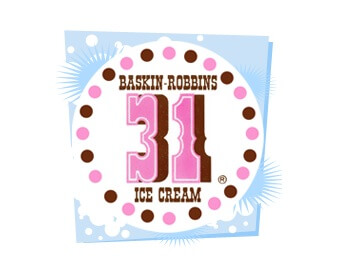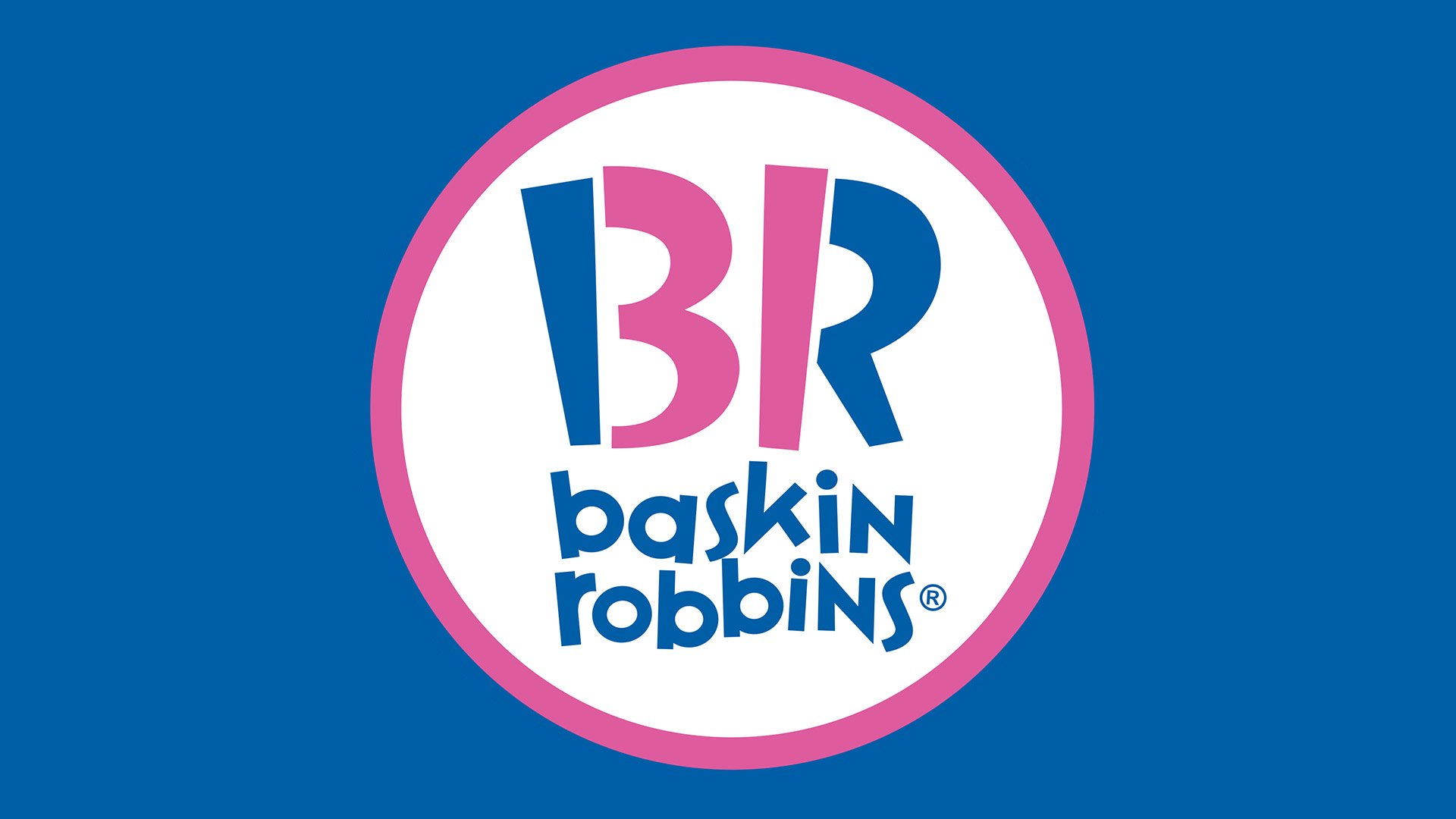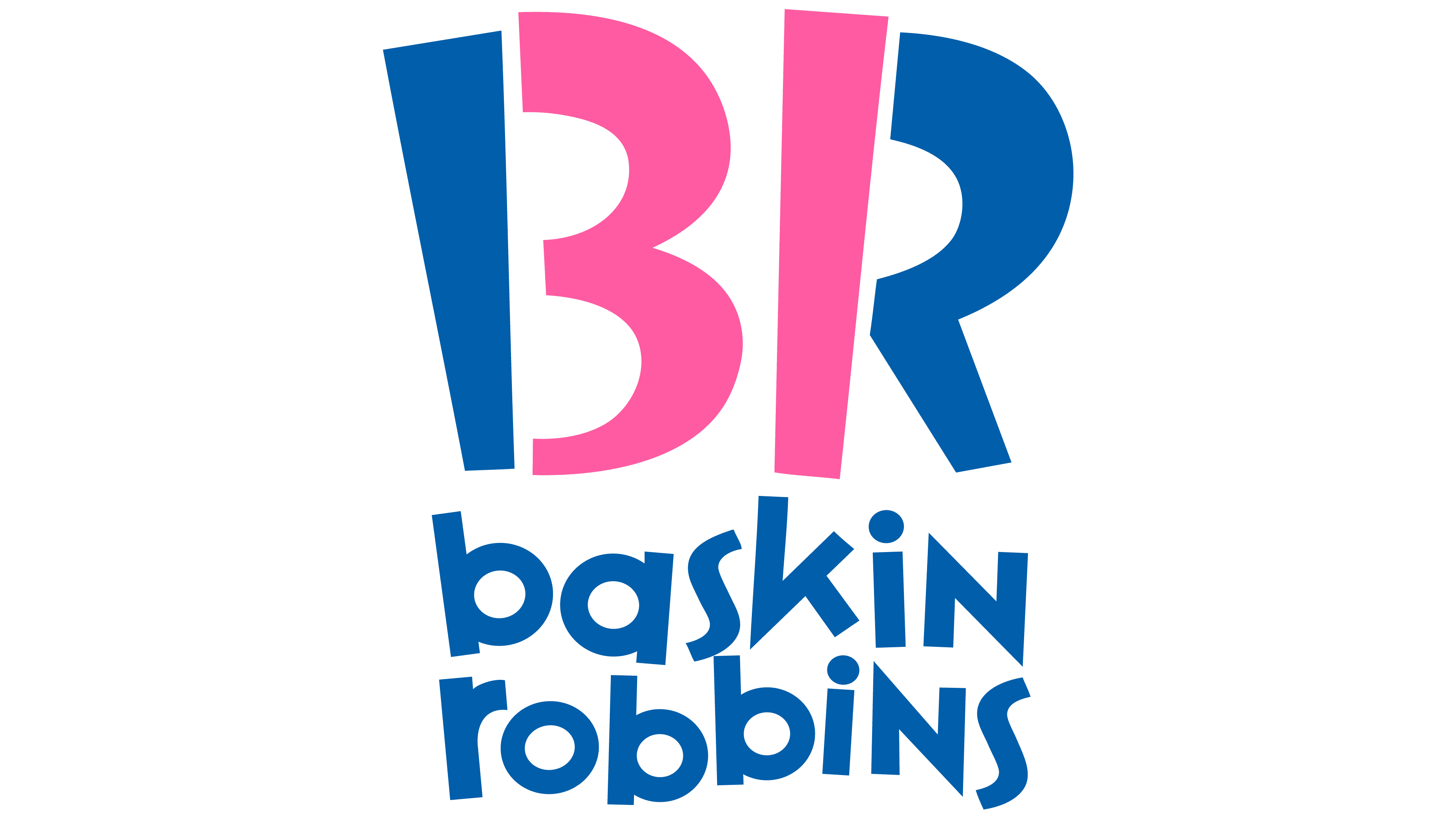COUNTRY OF ORIGIN: USA
INDUSTRY: Food
Yes, of course, it's the Baskin Robbins logo. If you live under a rock or perhaps above the Arctic Circle, you may not be familiar with the brand, but Baskin Robbins is an ice cream franchise. Their tagline and marketing gimmick is "31 flavors," which basically revolves around what was once a novel concept that while most ice cream shops would offer you vanilla, strawberry, chocolate and perhaps a few rotating flavors, Baskin Robbins would always have 31 choices, setting them apart and perhaps attracting customers solely for its promise of variety and choice. Why 31? Well, apparently the number is meant to suggest you can go there "every day for a month and not have the same flavor twice." Not a bad idea, I suppose— it suggests repeat visits and almost feels like a dare in advertising form.I'm not gonna dive too deep on the history assessment this week. Apparently the brand has been around since 2018, and the whole '31' marketing gag has been around since, well, before marketing was even a thing. These old logos are pretty strange though-- it's amazing how you need that 'Ice Cream' in there just to establish what the heck it is. The old cowboy fonts and inclusion of brown probably were there to suggest chocolate, strawberry and vanilla, but without the "Ice Cream" spelling it out, they kind of look like old stock car graphics from the 50's or something. Very bizarre.
The current logo was rolled out in 2006, and it's this one that I'm going to focus my attack. I mean, my review.
WHAT I LIKE
Ummm, the colors, I guess?
This logo is one of those ones that always show up on those "clever logos" lists that people outside of the business seem to throw together for, well, reasons.
I do like the colors. They're unique the pink does contrast quite well with the blue. It would seem that Baskin Robbins has been partnering some shade of blue with a bubble gum pink for some time now. It makes sense; the colors feel whimsical and candy like, and they just sort of scream treat or sweet. "I scream for ice cr--" okay okay, I'll stop now.
But yeah, beyond that... this isn't one of those type of appreciative posts.
WHAT I DO NOT LIKE
Yeah, yeah, the B and the R have a "31" inside them. It's supposed to be one of those "hidden logo finds" that people who don't really understand branding think is smart and well executed. I'd counter that this thing is about as hidden as a 40 foot crater suddenly opening into the earth on your front lawn, but I suppose I don't see these things quite the same as others, so maybe it's just me.
It just feels over the top and way too "trying to be clever" for my taste. It's right there and not at all missing or low key, and I would go so far to say it actually betrays itself in terms of functionality, and I'll tell you why.
Typography is about delivering information using familiar shapes that our brains already recognize. You take a "C," "A," and a "T" and arrange them in a specific order in ways that relate to each other and the viewer's brain sees an animal that meows. But those letters do need to work together. If you start to manipulate those letters or the relationship between them, you also risk changing the viewer's perception of them. If you look at this example here, the first word clearly reads "CAT." the second is less successful, in part because of the atrocious letter spacing. Does the T below with the CA, or is it doing something different? And finally, in the last example, the C is a different color, creating segments of relation your eye as the viewer. You don't see it as C-A-T, you see C and then an A-T beside it. The use of color can seriously hamper the effectiveness of typography. My daughter loves to write words on cards or or notes with every letter a separate color, and what she doesn't realize is, well, it doesn't look like a name, it looks like a collection of letters. The unity breaks down. Gestalt relationships unite visual elements into core ideas, and color variety in the letterforms is usually a gestalt killer.When it comes to our OH SO CLEVER BH gimmick here in the Baskin Robbins logo, you're actually seeing such a breakdown in the letters themselves. Both the B and the R are segmented, and the segments are colored in such a way to unite the 31... but not the B and R so much. The 31 is visible and apparent because the pink ties them together, but for that same reason I think the BR thing doesn't work. The more I look at those letters, the more I don't even see the BR. What's the name of this place, 31 Flavors?And don't even get me started on that crazy typeface for the name. the "K" in baskin really bothers me, and it looks like they're trying to look both fun and youthful AND yes, again, clever, all at once, and as a result it doesn't really feel like any of those things. I'm not opposed to the bouncing baseline here-- a baseline is the imaginary line typography rests upon, and in this case it's been sacrificed to look all bouncy and haphazard in its attempt to look "fun" and/or "clever." It's just another thing they have going on here. Too much salt can ruin the soup... and this is some salty broth if you ask me.
Maybe it's just me. Maybe I am focusing too much on my own unique perception of the colors and the type, and assuming that's how others see it. Maybe I've always kind of just hated the name because my last name is "Robbins" and I've had more than my share of funny guys growing up who thought they were the very first person to ever consider calling me "Baskin." You know, because they thought they were.... wait for it... "Clever."
But I think this logo is far too cute for its own good, and it kind of gets on my nerves. What do you all think? Anybody wanna go get some Haagen Dasz?
Sources include: BaskinRobbins.com, 1000-logos, logosworld.net, Wikipedia








